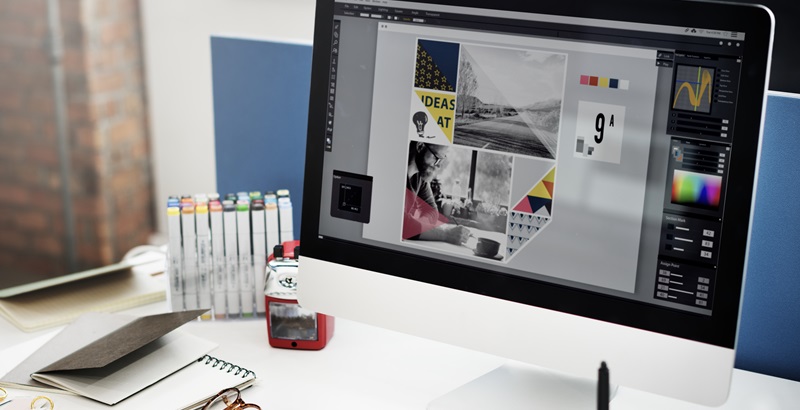The dawn of artificial intelligence (AI) heralds a transformative era in various fields, with the design industry particularly standing at the cusp of a revolution. AI-driven technologies empower designers with tools that enhance efficiency, spur creativity, and facilitate personalization, while also presenting an array of sophisticated decision-making capabilities. From graphic design to user experience (UX), AI’s fingerprints are becoming increasingly evident in the execution and conception of design projects. Challenging the traditional boundaries of this creative domain, AI promises to streamline workflows and unlock novel artistic expressions. However, professionals within this space also grapple with serious ethical considerations and the enduring quest to retain a sense of human authenticity in their craft. The impact of AI in design is profound and pervasive, necessitating a dialogue that acknowledges both its remarkable opportunities and the complexities it introduces.
Transforming Design Processes with AI Tools
The integration of AI into design workflows has necessitated a rethinking of conventional operations. Mundane and repetitive tasks that were previously time-consuming can now be managed efficiently, allowing designers to direct their focus toward more complex and innovative aspects of their projects. With AI-powered capabilities embedded in standard design software, processes such as auto-retouching, seamless pattern creation, and adaptive layout configurations have become increasingly accessible. Advanced user interface tools have evolved, functioning synergistically with user experience frameworks to deliver nuanced and impactful design solutions. These AI tools have redefined the benchmarks of productivity, propelling designers into a new era of efficient and transformative creativity. Yet, the burgeoning AI revolution within design processes is as much about the potential for innovation as it is about the responsibility to adapt and evolve existing design paradigms.
Unleashing Creativity and Personalization
AI is not just about streamlining tasks; it’s an engine for bespoke, creative endeavors. Through machine learning, AI digs deep into user data, helping creators tailor experiences that strike a chord with individuals. This involvement of AI in the creative process isn’t restricted to speeding things up—it paves the way for uncharted artistic expression. AI-informed predictive analytics arm designers with insights into budding trends, ensuring they remain at the forefront of design innovation. Such predictive prowess grants an unprecedented capacity to preempt user desires, enabling designs that are both timely and captivating. As AI trailblazes through the realm of creativity, it heralds a new era of personalization in design, transforming how designers connect with users and how those designs resonate with them. This fusion of AI and design is the harbinger of a personalization revolution, ready to reshape the creator-consumer dynamic.
Ethical Considerations in AI-Powered Design
While AI’s integration into the design landscape heralds exciting new possibilities, it equally presents ethical quandaries that must be navigated with discernment. Concerns around data privacy and security loom large, as sensitive user information fuels the AI systems that produce such bespoke design outcomes. The propensity for AI to inherit and propagate biases poses significant risks, potentially leading to unequal and unfair design impacts. Moreover, the impersonal nature of AI-generated content risks the dilution of unique human artistry that has long distinguished outstanding design. Upholding ethical standards in an AI-driven design world calls for a rigorous examination of data practices, a commitment to ensuring fairness, and a vigilant safeguarding of the human essence that underlies the core of the design ethos.
Addressing Challenges and Skill Gaps
Alongside the excitement surrounding AI’s capabilities come tangible challenges that the design community must grapple with. Suboptimal designs due to erroneous data interpretation or inadequate datasets can lead to outcomes that fall short of addressing user needs. The learning curve for adeptly navigating AI tools introduces a significant skill gap, requiring designers to undertake continual training and education to keep pace. As the field increasingly relies on sophisticated AI technologies, designers must equip themselves with the knowledge to not only utilize these tools to their full potential but also remain mindful of their limitations. Overcoming these challenges is essential for ensuring that the evolution towards an AI-integrated design landscape is both smooth and responsible, retaining the integrity of design as a human-centered craft even amid relentless automation and technological advancement.
The Path Forward: Mindful Adoption of AI in Design
AI’s relentless march into the design sector necessitates not just adoption, but a thoughtful and well-informed embrace of the technology. It requires an approach that is as conscious of privacy and security as it is eager to harness AI’s potential for improved efficiency and impact. Designers must stay informed of AI advancements and remain flexible to continuously adapt their skills. In doing so, they prepare themselves to leverage AI’s capabilities responsibly and creatively, balancing its offerings against the imperative to preserve the human touch that defines the soul of design. The mindful application of AI in design is crucial to maximizing its benefits while addressing inherent risks. For the design community, this means embracing AI as a powerful ally in the creative process, yet remaining vigilant of its ethical and practical challenges to ensure a harmonious evolution within the field.

